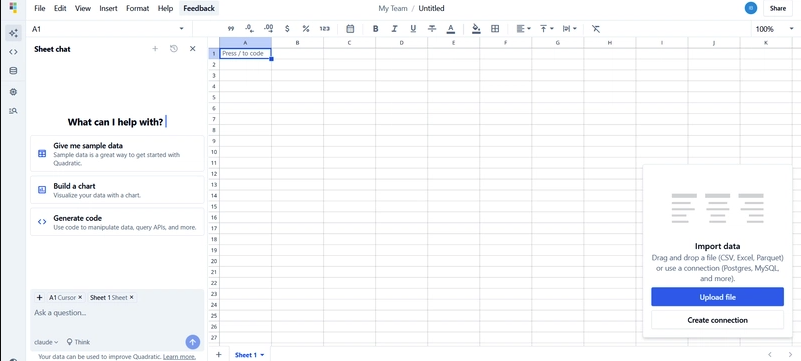CSV files are everywhere. At CSV Loader, we see them used daily for sharing everything from financial records to scientific data. But CSV is not without problems—its simplicity hides some serious flaws.
The biggest challenge is lack of standardization. One file may use commas, another semicolons, tabs, or pipes. Some files include headers, others don’t. Even encoding can differ—UTF-8, ANSI, or ISO—making imports frustrating.
Another issue is data types. A CSV can’t distinguish between text, numbers, or dates. To a CSV, everything is just plain text. This means that before importing into databases, you often need to manually define columns and clean up values.
Large datasets also expose CSV’s weakness. A file larger than a few hundred MBs can overwhelm Excel or text editors. Gigabyte-sized CSVs require chunking, splitting, or specialized tools to process effectively.
And yet, CSV continues to dominate. Why? Because it’s the most universal format. Every spreadsheet program supports it, every programming language can parse it, and almost any system can generate it.
In other words, CSV persists not because it’s flawless—but because it’s accessible. It’s the lowest common denominator for data, and sometimes, that’s exactly what we need.
The biggest challenge is lack of standardization. One file may use commas, another semicolons, tabs, or pipes. Some files include headers, others don’t. Even encoding can differ—UTF-8, ANSI, or ISO—making imports frustrating.
Another issue is data types. A CSV can’t distinguish between text, numbers, or dates. To a CSV, everything is just plain text. This means that before importing into databases, you often need to manually define columns and clean up values.
Large datasets also expose CSV’s weakness. A file larger than a few hundred MBs can overwhelm Excel or text editors. Gigabyte-sized CSVs require chunking, splitting, or specialized tools to process effectively.
And yet, CSV continues to dominate. Why? Because it’s the most universal format. Every spreadsheet program supports it, every programming language can parse it, and almost any system can generate it.
In other words, CSV persists not because it’s flawless—but because it’s accessible. It’s the lowest common denominator for data, and sometimes, that’s exactly what we need.
